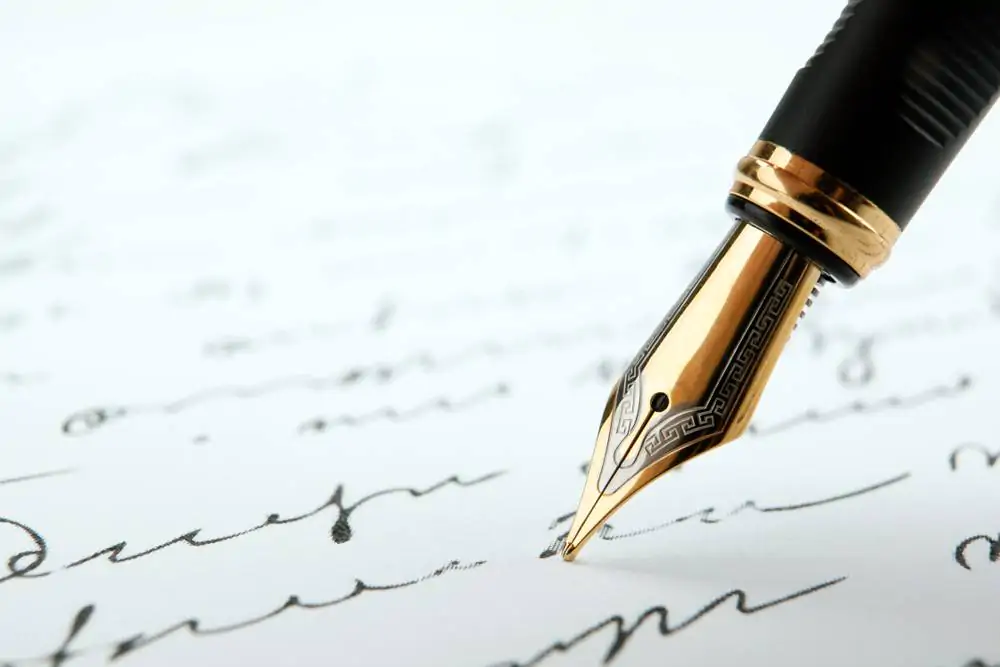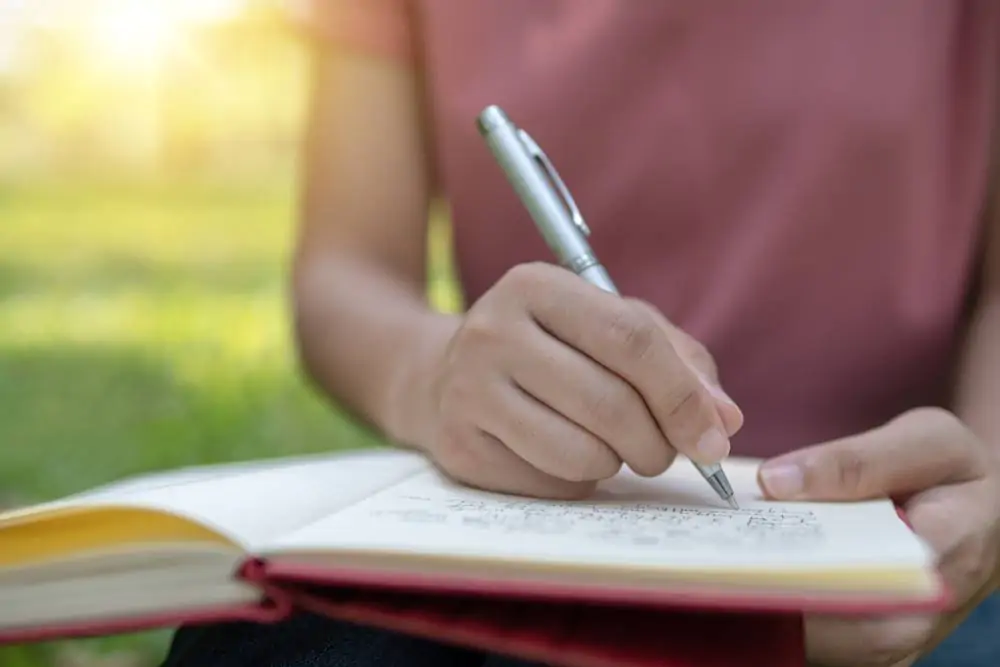What is meter in poetry? Find out in our detailed guide to begin writing today!
Meter in poetry refers to the rhythmic structure of a verse, which is shaped by the arrangement of stressed and unstressed syllables. This rhythmic pattern is an essential component of poetic expression, providing a musical quality and a sense of structure that enhances the meaning and emotional impact of the words.
By using meter, poets can create an auditory experience that complements the poem’s themes and imagery, drawing the reader into a deeper engagement with the text. But why write poems? There are many reasons, such as self-expression, creativity, and for employment. Keep reading to learn the basics of meter in poetry!
Contents
Basics of Meter

Throughout the history of literature, poets from diverse cultures and periods have employed various metrical patterns to convey their ideas and emotions. These patterns have evolved, reflecting changing literary movements and aesthetic sensibilities. While meter use may vary across poetic traditions, its importance remains constant as a foundational element of poetry.
Understanding the basics of meter is fundamental to appreciating and analyzing the rhythmic structure of poetry. The following explains the key concepts, including metrical feet, types of metrical lines, and the process of scansion, which form the foundation of meter in poetry.
A metrical foot is the basic unit of meter, consisting of a combination of stressed and unstressed syllables. There are several types of metrical feet commonly found in English poetry:
- Iamb: An iamb is a two-syllable foot with the first syllable being unstressed and the second syllable stressed (e.g., “re-veal”).
- Trochee: A trochee is a two-syllable foot with the first syllable stressed and the second syllable unstressed (e.g., “lovely”).
- Anapest: An anapest is a three-syllable foot with the first two syllables being unstressed and the third syllable stressed (e.g., “un-der-stand”).
- Dactyl: A dactyl is a three-syllable foot with the first syllable stressed and the next two syllables unstressed (e.g., “murmuring”).
A metrical line consists of a specific number of feet that determine the line’s overall rhythmic pattern. Common types of metrical lines in English poetry include:
- Monometer: A line with one metrical foot.
- Dimeter: A line with two metrical feet.
- Trimeter: A line with three metrical feet.
- Tetrameter: A line with four metrical feet.
- Pentameter: A line with five metrical feet.
- Hexameter: A line with six metrical feet.
Scansion is the process of analyzing the meter of a poem by identifying the metrical feet and counting the number of feet in each line. To perform scansion, try the following steps:
- Read the poem aloud, paying attention to the natural stress patterns of the words.
- Mark the stressed syllables with an accent mark and the unstressed syllables with a breve.
- Divide the lines into metrical feet based on the stress patterns.
- Identify the type of metrical foot (iamb, trochee, anapest, or dactyl) and the type of metrical line (monometer, dimeter, trimeter, etc.).
By understanding the basics of meter, including the different metrical feet and types of metrical lines, you can begin to appreciate the intricate rhythmic patterns that shape a poem’s structure and sound. Knowing this can also serve as a foundation for exploring meter’s more complex aspects, such as rhythm variations and the relationship between meter and poetic form. You might find these writing tips for poetry helpful.
Common Metrical Patterns in English Poetry

English poetry features a variety of metrical patterns that contribute to its rich and diverse rhythmic landscape. These common metrical patterns in English poetry showcase the diverse rhythmic structures that contribute to the beauty and expressiveness of verse. Each pattern has unique characteristics, lending to specific poetic forms, themes, and moods. By mastering these metrical patterns, poets can create a wide range of rhythmic effects that enhance their work’s emotional impact and meaning.
In addition to these patterns, budding poets may experiment with other metrical combinations or employ variations in rhythm to create a more complex and dynamic poetic landscape. Understanding the distinct features and applications of these common metrical patterns is essential for anyone seeking to appreciate English poetry’s nuances or compose their verse. By studying these examples and exploring the vast range of metrical possibilities, writers and readers can better understand the artistry and craftsmanship underlying the world of poetry.
Iambic Pentameter
Definition and structure: Iambic pentameter is arguably English poetry’s most prevalent metrical pattern. It consists of five iambic feet, each containing an unstressed syllable followed by a stressed syllable, for a total of ten syllables per line. This pattern creates a natural, rhythmic flow that closely resembles spoken English.
Examples: Iambic pentameter is widely used in various poetic forms, from sonnets to blank verse. William Shakespeare, for instance, employed iambic pentameter in his plays and sonnets. The opening line of his Sonnet 18 serves as a classic example: “Shall I compare thee to a summer’s day?” Another example can be found in John Milton’s epic poem “Paradise Lost”: “Of Man’s first disobedience, and the fruit.”
Trochaic Tetrameter
Definition and structure: Trochaic tetrameter is a metrical pattern consisting of four trochaic feet, each containing a stressed syllable followed by an unstressed syllable. This pattern creates a strong, rhythmic beat well-suited for narrative or dramatic poetry.
Examples: Trochaic tetrameter is often employed in ballads and narrative poems. Edgar Allan Poe’s “The Raven” is a prime example of this metric pattern: “Once upon a midnight dreary, while I pondered, weak and weary.” Another instance can be found in Henry Wadsworth Longfellow’s “The Song of Hiawatha”: “By the shores of Gitche Gumee, by the shining Big-Sea-Water.”
Anapestic Tetrameter
Definition and structure: Anapestic tetrameter is a metrical pattern that consists of four anapestic feet, each containing two unstressed syllables followed by a stressed syllable. The resulting rhythm is lively and energetic, making it well-suited for humorous or light-hearted verse.
Examples: Anapestic tetrameter is commonly found in comic or narrative poetry. Lord Byron’s “The Destruction of Sennacherib” demonstrates this metrical pattern: “The Assyrian came down like the wolf on the fold.” Additionally, Dr. Seuss often employed anapestic tetrameter in his children’s books, as seen in “Yertle the Turtle”: “On the far-away island of Sala-ma-Sond.”
Dactylic Hexameter
Definition and structure: Dactylic hexameter is a metrical pattern featuring six dactylic feet, each containing a stressed syllable followed by two unstressed syllables. This pattern has a strong, flowing rhythm that lends itself to epic or narrative poetry. While more common in classical Greek and Latin poetry, dactylic hexameter has also been employed in English verse.
Examples: One of the few English poems written in dactylic hexameter is Henry Wadsworth Longfellow’s “Evangeline: A Tale of Acadie.” An excerpt from the poem illustrates the pattern: “This is the forest primeval, the murmuring pines and the hemlocks.” Another example can be found in Samuel Taylor Coleridge’s “The Rime of the Ancient Mariner”: “It is an ancient mariner, and he stoppeth one of three.”
Variations in Meter
While poets often adhere to specific metrical patterns to create a sense of structure and rhythm, they may also employ variations in meter to achieve various artistic effects. These variations can introduce a sense of surprise or tension, highlight specific words or phrases, and contribute to the poem’s overall meaning. Following is an explanation of the different types of meter variations and their role in creating rhythm and meaning.
A. Substitutions and deviations from the standard meter: One way poets introduce variation in meter is by substituting a different metrical foot within an established pattern. For example, in an iambic pentameter line, a poet might replace an iamb with a trochee or a spondee (two stressed syllables). These substitutions can emphasize certain words or break the regular rhythm, drawing the reader’s attention to particular lines or ideas.
B. The role of variations in creating rhythm and meaning: Variations in meter can serve multiple purposes within a poem. They can disrupt the regularity of a metrical pattern, creating a sense of tension or unease that reflects the poem’s themes or emotions. Alternatively, they can provide relief or contrast, as a pause or change in rhythm can offer a moment of respite or emphasize a shift in tone.
Consider Robert Frost’s “The Road Not Taken,” written in iambic tetrameter with occasional variations. The poem begins with a line that deviates from the regular pattern: “Two roads diverged in a yellow wood.” The use of a spondee (“yellow wood”) disrupts the expected iambic rhythm, drawing attention to the significance of the setting and the moment of choice.
C. Examples of variations in famous poems: Many renowned poets have utilized variations in meter to enhance their work. In William Shakespeare’s “Macbeth,” the play’s ominous atmosphere is heightened by the irregular meter in the witches’ chant: “Double, double, toil and trouble; / Fire burn, and cauldron bubble.” The mixture of trochaic and iambic feet contributes to the unsettling mood.
Another example can be found in Emily Dickinson’s “Because I could not stop for Death,” where the poem’s predominantly iambic structure is occasionally interrupted by anapests and spondees. These variations create a sense of movement and progression, reflecting the journey the speaker takes with Death.
Variations in meter are a basic part of poetic expression, allowing poets to create rhythm and meaning in their work. By skillfully employing substitutions and deviations from standard metrical patterns, poets can emphasize specific words, create tone shifts, and enhance their verse’s emotional impact. Understanding and appreciating these variations is essential for a deeper engagement with the world of poetry and the almost limitless ways it can speak to the human experience. You may also be interested in learning about Rumi poetry.
The Evolution of Meter in Poetry
The evolution of meter in poetry reflects the changing literary movements, cultural influences, and aesthetic sensibilities throughout history. Greek and Latin poets employed strict metrical forms such as dactylic hexameter and elegiac couplets in classical antiquity. As poetry evolved, new metrical patterns and forms emerged, shaped by linguistic and cultural shifts.
During the Middle Ages, English poetry began to adopt meter from its Latin and French counterparts, giving rise to forms like the alliterative verse. The Renaissance period saw the development of iambic pentameter and the sonnet, which became the hallmark of English poetry. In the Romantic era, poets sought greater freedom and flexibility, experimenting with various metrical patterns to express their emotions and ideas.
The 20th century brought further experimentation with the advent of free verse, which eschewed traditional metrical patterns in favor of a more organic approach to rhythm. Throughout these changes, the significance of meter as a fundamental aspect of poetic expression remains constant, providing a rhythmic foundation for the art of poetry.
Meter is a core component of poetry, shaping its rhythm, structure, and emotional impact. By exploring the intricacies of metrical patterns and their evolution, writers can deepen their understanding and appreciation of poetic expression and its rich, diverse landscape. As readers engage with poetry, understanding meter enhances the connection to this timeless art form.
Loved this guide? Check out our round-up of poems about Spring!